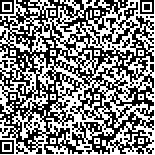下载中心
优秀审稿专家
优秀论文
相关链接
摘要

风云三号C星(FY-3C)可见光红外扫描辐射计(VIRR)两个红外分裂窗通道数据生成的晴空大气可降水(TPW)产品已投入业务使用。本文介绍了该产品的生成方法,并从产品精度和稳定性两个方面评价产品质量。与MODIS Terra TPW的月平均数据对比,FY-3C VIRR TPW能正确反应大气可降水的全球分布。与2015年3月—4月的全球探空数据对比,FY-3C VIRR TPW均方根误差为5.36 mm,相对误差在水汽值大于30 mm时在20%以内,并且夜间产品精度优于白天。相比于MODIS红外TPW产品与探空数据的误差,FY-3C TPW精度略好。计算2015年1月至2016年7月FY-3C VIRR TPW产品相对探空数据的月均方根误差,19个月均方根误差的标准差是0.54 mm,小于同期MODIS Terra TPW均方根误差的标准差,说明FY-3C VIRR TPW产品在检验时期内更稳定。FY-3C VIRR TPW产品精度较高且质量稳定,具备广泛应用能力。
Total Precipitable Water (TPW) products, which are derived from satellite FY-3C Visible and Infrared Radiometer (VIRR) infrared split-window information, have been officially put into operation. High-quality FY-3C TPWs could be used in many fields, such as weather analysis, climate study, and atmospheric correction in land surface remote sensing. The retrieval method of TPW products has only been introduced briefly, and product assessments have yet to be conducted. Thus, we compared the product accuracies and stabilities of MODIS Terra infrared TPWs and radiosonde TPWs.
The global distribution of FY-3C VIRR TPW was evaluated and compared with that of MODIS Terra monthly infrared TPW in March 2015. In addition, we selected two months (March to April 2015) of radiosonde TPWs to calculate FY-3C TPW errors and analyze the features of global errors, errors changed with water vapor, error day-night distributions, and error space distributions. At the same time, the same accuracy analyses for MODIS Terra daily TPWs were conducted by comparing them with the same radiosonde TPWs. The results can be used as reference for FY-3C TPW accuracy evaluations. Moreover, monthly RMSEs of FY-3C TPWs from January 2015 to July 2016, as well as monthly RMSEs of MODIS TPWs, were calculated by comparing with radiosonde data. The variations of two time series RMSEs were compared to assess FY-3C TPW stabilities relative to MODIS TPWs.
FY-3C VIRR TPW is generally consistent with MODIS monthly TPW in space distribution. The differences between the two TPWs are smaller than 30° S to the south pole and 30° N to the north pole and relatively larger between 30° S and 30° N.
The verifications of VIRR TPW, which were conducted by comparing with two-month radiosonde data, show that the bias, RMSE, and correlation coefficient are -0.16 mm, 5.36 mm, and 0.85, respectively, which are slightly better than the errors of MODIS TPWs, except in dry atmosphere (TPW<10 mm). Analyses of errors changed with water vapor indicate that the relative errors of VIRR TPWs are less than 20% when water vapor is more than 30 mm, which is much higher in dry atmosphere. In addition, in dry (TPW<10 mm) and wet (TPW>55 mm) atmospheres, the relative errors of VIRR TPWs are smaller than those of MODIS TPWs, whereas the differences between the two TPWs are small when TPWs are between 30 mm and 50 mm. The performances of VIRR and MODIS TPWs are better at night than at daytime. Moreover, the qualities of VIRR TPW are better than those of MODIS TPWs at daytime but slightly worse at night. Biases of VIRR TPWs mostly sit at ±2 mm. RMSEs are small in middle- and high-latitude areas and large in lower-latitude areas. Furthermore, most biases and RMSEs of VIRR TPWs in the maps are better than those of MODIS TPWs but worse near the coastlines.
The mean and standard deviation of 19 VIRR TPW monthly RMSEs are 5.63 and 0.54 mm, whereas those of MODIS TPWs are 6.19 and 1.33 mm, respectively. These data indicate that the qualities of VIRR TPWs are more stable than those of MODIS TPWs. Given their good agreement with radiosonde data and higher precision than MODIS TPWs, FY-3C VIRR TPW products have good accuracies. In addition, FY-3C VIRR TPWs have better stability than MODIS TPWs. With high precision and stable qualities, FY-3C VIRR TPW products have wide application capabilities.

